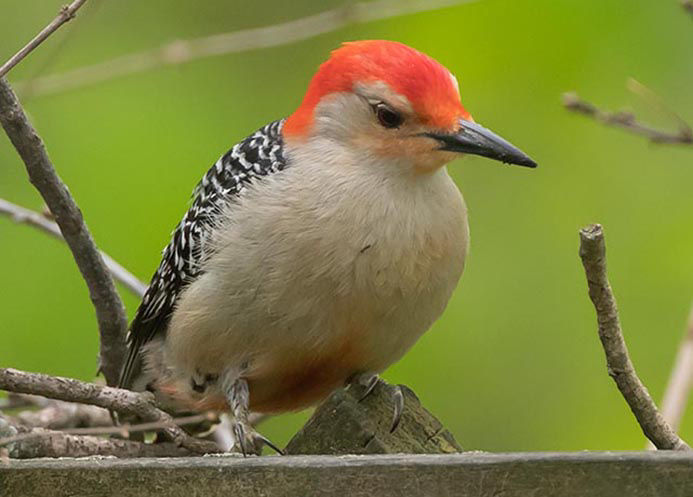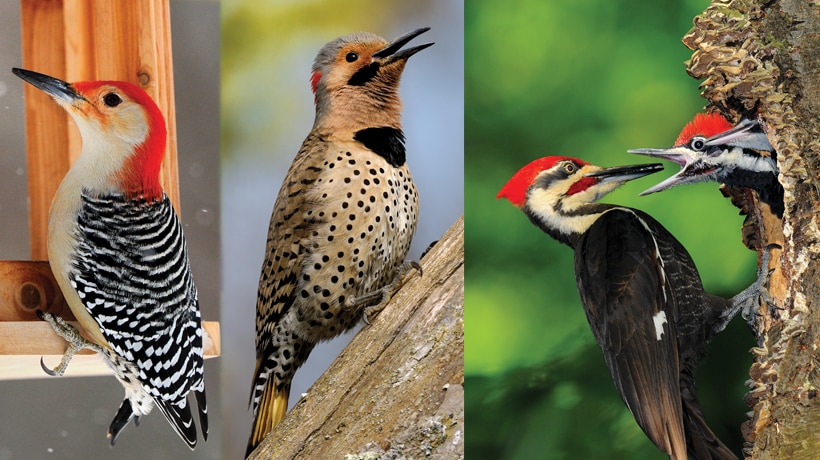Woodpeckers in Florida Population: Variety Introduction and Conservation
Woodpeckers in Florida Population: Variety Introduction and Conservation
Blog Article
Woodpeckers: A Comprehensive Guide to Understanding These Special Birds
Woodpeckers, with their unique habits and physical attributes, have actually long mesmerized the inquisitiveness of ornithologists and nature enthusiasts alike. As we explore the complex anatomy, diverse types, and eco-friendly significance of woodpeckers, a deeper admiration for these distinct birds and the secrets they hold unfolds.

Woodpeckers' Drumming Behavior
Woodpeckers exhibit a rhythmic and precise drumming actions that serves various vital functions in their lives. This behavior is largely associated with interaction, area protection, and foraging. The distinctive drumming noise is produced by the quick pecking of their beaks against tough surfaces such as tree trunks, branches, and even steel objects.
Communication is a critical facet of woodpecker habits, and drumming plays a considerable role in this procedure. Woodpeckers make use of drumming to establish their existence, attract friends, and preserve call with their partners and children. The frequency, intensity, and period of drumming sequences share details messages to various other woodpeckers in the area.
Along with communication, woodpeckers utilize drumming habits for territory defense. Woodpeckers in Florida. The loud and recurring drumming works as an alerting to prospective intruders, signaling that the location is currently claimed. By developing their region via drumming, woodpeckers lower the likelihood of disputes over important resources such as food and nesting websites
Additionally, woodpeckers additionally utilize drumming as a foraging method. The rhythmic pecking aids them find insects concealing beneath the bark of trees by creating resonances that interrupt the prey's camouflage. This actions showcases the adaptability and ingenuity of woodpeckers in utilizing their drumming abilities for multiple important purposes.
One-of-a-kind Adaptations for Tree Climbing
Having actually mastered the art of drumming to communicate, defend area, and forage, woodpeckers have actually developed distinct adjustments that promote their remarkable climbing capabilities in their arboreal habitats. One crucial adjustment is their specific feet. Woodpeckers have zygodactyl feet, with two toes aiming forward and two toes aiming in reverse. This plan gives a solid grip on the upright surface areas of trees, permitting them to stick effortlessly while foraging for insects or drumming. Furthermore, woodpeckers have stiff tail feathers that act as a prop to support their bodies as they climb. These tail feathers supply stability and balance, making it possible for woodpeckers to steer up tree trunks with accuracy and dexterity.
Furthermore, woodpeckers have powerful neck muscle mass and an one-of-a-kind head framework that aid in their climbing capacities. Their strong neck muscular tissues enable them to rapidly peck at tree bark without experiencing whiplash, while their thick head and little brain act as shock absorbers, securing them from the impact of duplicated drumming. These adaptations collectively enable woodpeckers to browse the vertical world of trees with efficiency and poise.

Function of Woodpeckers in Communities
By foraging for insects under the bark of trees, woodpeckers assist regulate bug populations, protecting against outbreaks that might harm the total wellness of the woodland. Furthermore, woodpeckers produce dental caries in trees that serve as essential nesting websites for a variety of other bird varieties, advertising biodiversity within the ecosystem.
In addition, the drumming and vocalizations of woodpeckers play an important role in communication and area facility. These read more noises not only serve to attract mates yet additionally assist specify borders between various woodpecker regions, decreasing disputes and promoting a harmonious conjunction within the woodland neighborhood. Overall, the existence of woodpeckers in forest communities highlights their value as keystone types, influencing the dynamics and operating of these habitats in multifaceted ways.
Anatomy: Specialized Beaks and Feet
In the intricate web of forest ecosystems, the specialized beaks and feet of woodpeckers are essential adaptations that allow them to accomplish their important eco-friendly roles. Woodpeckers possess one-of-a-kind anatomical features that are especially designed to assist them in their foraging and nesting actions.
One of the most distinguishing characteristic of woodpeckers is their strong, chisel-shaped beaks. These beaks are flawlessly adapted for exploration right into timber to discover pests, larvae, and sap hidden under the bark of trees. The solid muscle mass and sturdy structure of their beaks allow woodpeckers to eat a price of as much as 20 times per second without causing damage to their heads.
Additionally, woodpeckers have actually specialized feet that help in their acrobatic climbing capacities. Their feet have 2 toes directing ahead and 2 toes pointing in reverse, providing a strong grasp on vertical surface areas (Woodpeckers in Florida). This one-of-a-kind foot arrangement, along with rigid tail plumes that act as an encouraging prop, allows woodpeckers to hold on to tree trunks and branches effortlessly while they look for food or excavate nesting cavities
Woodpecker Types Diversity
Woodpeckers are a diverse team of birds discovered across different communities worldwide, with over 200 well-known species showing adaptations to different settings. Woodpeckers have progressed to live in an array of settings, from woodlands and woodlands to grasslands and deserts, each presenting one-of-a-kind obstacles that have influenced the development of distinctive woodpecker species.
One more contributing factor to woodpecker species variety is their specialized feeding actions. Different species have actually evolved to manipulate different food resources, such as bugs, tree sap, fruits, and nuts, leading to the development of certain adjustments in beak shape, size, and toughness. These adjustments make it possible for woodpeckers to forage successfully in their respective environments, lowering competitors amongst types and advertising specific niche distinction. view it now Furthermore, geographical seclusion and historic factors have actually played a function in forming the circulation and variety of woodpecker varieties, leading to the vast range of specialized adjustments seen in these fascinating birds.

Final Thought
In conclusion, woodpeckers are fascinating birds that show distinct drumming habits, specialized adjustments for tree click over here now climbing, and play crucial functions in ecosystems. With a varied range of woodpecker types located worldwide, these birds are vital for keeping the wellness and equilibrium of woodlands and woodlands.
Report this page